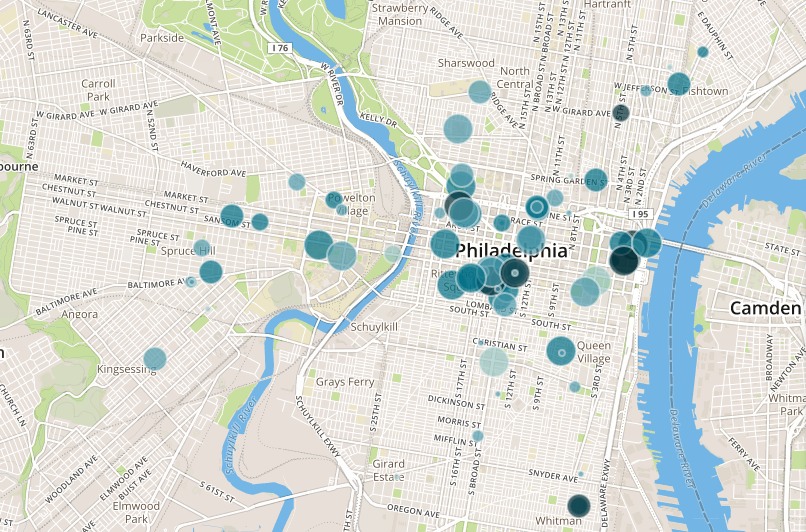For the first 10 years of her career, UX developer Christina Deemer did a different kind of development.
She worked in the development departments of cultural organizations, running fundraising for places like Opera Philadelphia and the Rosenbach Museum. So her interest in her latest project, a map of arts grants in Philadelphia, is personal. It’s an example of the kinds of projects that come to life when people with diverse backgrounds get into tech.
The map looks at 2014 grantees of the Philadelphia Cultural Fund, the city’s arts funding arm and just one of several local cultural grantmaking orgs. It’s still a work in progress, with just under half of the grantees mapped. The most obvious takeaway, at least from the grantees mapped, is that the grants are clustered in Center City.
See the map
“The purpose of the Philadelphia Cultural Fund Map is to add a layer of transparency to the Philadelphia Cultural Fund’s grant-making process,” wrote Deemer, a developer at design firm Interactive Mechanics, on the map’s “About” page. “While many grantmakers restrict their funds to organizations in a given geographical area (i.e. only giving to orgs in Pennsylvania or the Philadelphia region), there is only occasionally a discussion of how funds are distributed within those boundaries.”
You can find a similar map with more historical data on Cultureblocks, Policy Map’s arts mapping tool that we reported on when it launched in 2013.

Deemer, who built the data set herself, made the map as part of this summer’s Girl Develop It/Code for Philly Open Source Mentorship Program. She worked with mentors Hector Castro and Matt McFarland, both of mapping firm Azavea. She was one of two open source mentees that built projects from scratch — others contributed to existing projects like CyclePhilly and SEPTA Ninja.
This map shows where Philly city government spends its arts funding







